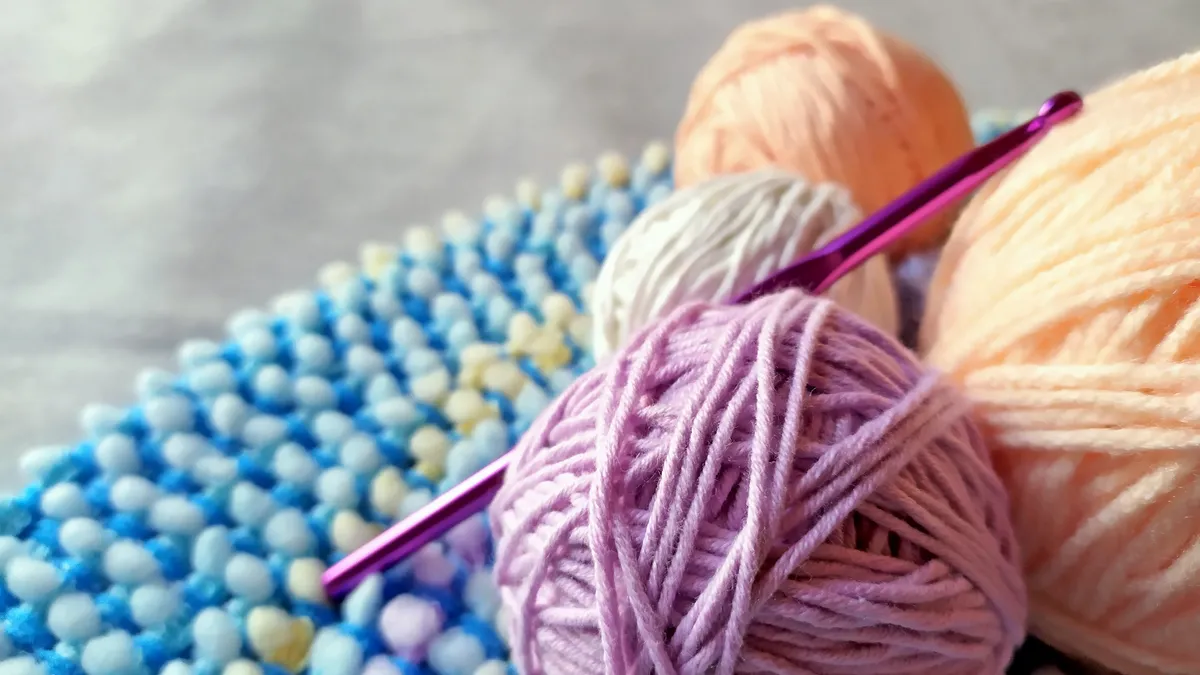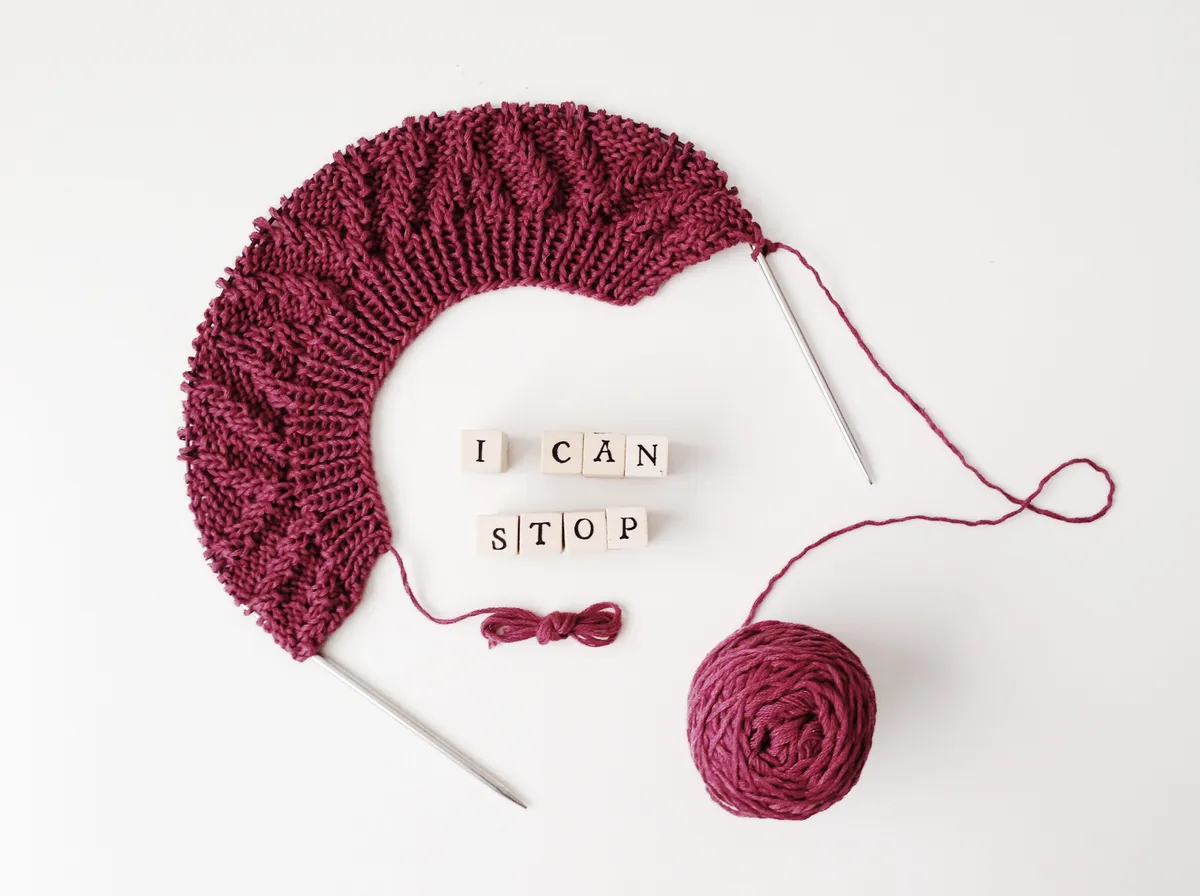It usually starts with a tingling in my left wrist. By then, it’s too late, and I know what’s coming. In this article, we look at what RSI is, how it can affect you as a knitter, and how to avoid it. Visit Rosee's store on Ravelry for beautiful knitwear patterns!
If you're just starting out in knitting, check out our article, knitting for beginners. Don't have any of the materials? Browse through our selection of the best knitting kits and get the low-down on the different weights of yarn with our yarn weight conversion chart.
What is RSI?
Repetitive strain injury, commonly known as RSI, is the curse of knitters everywhere. RSI is a pain that develops as a result of prolonged repetitive actions. In knitters, it can particularly affect the wrists, hands, neck and even back. Read more on the signs of RSI over on the NHS website.
How do you develop RSI?
So how do you develop RSI, and what can you do to prevent it? RSI occurs when the muscles and tendons in your wrists and fingers become strained by repeated movement. This in turn causes the damaged muscles to contract, reducing their range of movement. At the same time, the sheaths housing your tendons can run out of lubrication, causing chafing. Sitting for a long time, poor posture, gripping the needles too tightly or putting excess strain on the wrists during large projects especially, can all contribute to the development of RSI. So what are the signs of RSI?

8 signs of RSI:
Signs of RSI can range from mild to severe and often develop gradually over time. Signs of RSI usually include:
-
Tenderness
-
Aches and pain
-
Cramp
-
Stiffness
-
Weakness
-
Tingling
-
Numbness
-
Swelling
What do I do if I have RSI?
If you experience any of these symptoms before, during or after knitting, don’t ignore them! It’s vital to rest, as continuing to knit could make the problem worse as the muscles and tendons become more swollen and suffer further chafing.
As a designer and journalist, I spend most of my time either knitting or typing. It’s not a great combination, and I’ve had to self-impose several knitting bans due to RSI since joining The Knitter.
Our technical assistant, Jen Storey, is testament to that fact. “When I had my two episodes of RSI in my wrist, nothing helped except strict rest, no knitting at all, no lifting, and limited typing, usually for at least a week or more,” she says. “If I tried to knit when the pain hadn’t been completely gone for at least a day or two, I would find that it would come back with a vengeance".

“Without being able to knit, watching TV or sitting in doctor’s waiting rooms felt like torture! So it was a true test of my willpower, but definitely worth it in the end. I haven’t suffered from RSI for at least 18 months now. I’ve learned to stop knitting as soon as I notice even a small amount of pain in my wrist, give myself a day off to rest, and I’ve then been fine.”
Of course, stopping knitting for a day or two might just be bearable. But what if your symptoms just won’t go away? In my case, I’ve had periods where I haven’t been able to knit for at least a month. As someone used to knitting for at least a couple of hours per day (and yes, I do see the connection), it can be absolute torture.
If you find yourself in a similar situation, it is worth reminding yourself that a month or two without knitting is better than risking never knitting again.
When I’m knitting I sometimes get so focused on what I’m doing I forget to make sure I’m sitting comfortably. I also knit pretty quickly, which puts my hands under a fair amount of stress and strain. And when I have a deadline for a design I might spend all day working on the same project, knitting as fast as I can in time to catch the last post!
Do I need to see a doctor for RSI?
We advise that you always speak to your doctor if you are suffering from painful or prolonged RSI, especially if you have taken steps to minimise the activity that is causing you pain. Typically, doctors would prescribe anti-inflammatory medication or steroid injections, plus a course of physiotherapy. They may also recommend that you wear a wrist brace, particularly at night, and suggest some stretching excercises. If you only have mild symptoms, then rest is key - and it may be all you need to make a full recovery. However, it is important to get the right treatment early on, as it can get worse if left untreated and develop into a chronic, long-term problem.

What can I do to help knitting hand pain?
First - rest. Stop the activity that is causing you pain. Put the knitting needles down (you can do it!). If you have knitting hand pain, try putting a cold pack on the affected area. Taking ibuprofen will also help, as will paracetamol or short-term use of anti-inflammatory medicines. Other complementary therapies and relaxation techniques that many people find helpful, are yoga, acupuncture and the Alexander technique. Read the official guidance on treatment for RSI on the NHS website.
How can I prevent RSI?
Of course, it’s not only designers who have to knit to deadline. Knitters are on the whole generous people. Whether it’s whipping up socks, mittens, and hats for birthdays, creating beautiful baby blankets before the newborn makes an appearance or putting in the hours on a wedding shawl in time for the big day, there are never enough hours to get all the knitting done.
That doesn’t mean you shouldn’t knit for hours on end (although it’s not ideal). But taking regular breaks and moving around and stretching can do a lot to prevent RSI from occurring in the first place.
Variety is also key, as technical editor and designer Jen Arnall-Culliford explains. “My RSI kicked off last year after I knitted too long and hard on a project in 1x1 rib and 4ply yarn. The repeated movement of the yarn, combined with my day job which involves lots of typing and using a mouse, was a bad combination.
“I lost all sensation in the top joint of my forefinger on the right hand. My doctor suggested doing fewer of the movements that were causing the problem and warned me that it could take up to six months to be fully better.

“I spent around a month barely doing any knitting at all, and also used some Lion Brand hand support gloves that a friend sent over to me from the USA.
“When I returned to knitting, I taught myself to hold the yarn in my left hand. I’ve always been a very right-handed knitter, but variety is one of the things that can help to prevent RSI, so I persevered.
“It took about six months before the feeling in my finger returned. However, things still aren’t totally back to normal, and I’m now having some pain in my arms, regardless of which hand the wool is in.
“Not long after the RSI was diagnosed, I read June Hemmons Hiatt’s The Principles of Knitting, where she talks about how vital it is for us all to be able to knit in more than one style. I wish I’d read this before.
“If I had one piece of advice, it would be not to push yourself too hard in the first place. Take breaks. Change projects. Make sure that you sit in a relaxed and comfortable position. And if your arms or hands or fingers start to twinge or hurt even a little bit, take a proper long break.”
Resources for advice on RSI
If you are concerned about RSI, the best thing you can do is talk to your GP. Here are some resources for advice on RSI:
How to avoid RSI when knitting
We hope you have found this article, 8 signs you have RSI, useful. For more practical information on how to avoid RSI, check out Rosee's other article, How to avoid RSI when knitting. Images by Rebecca Grant, Karina L, RocknWool,
